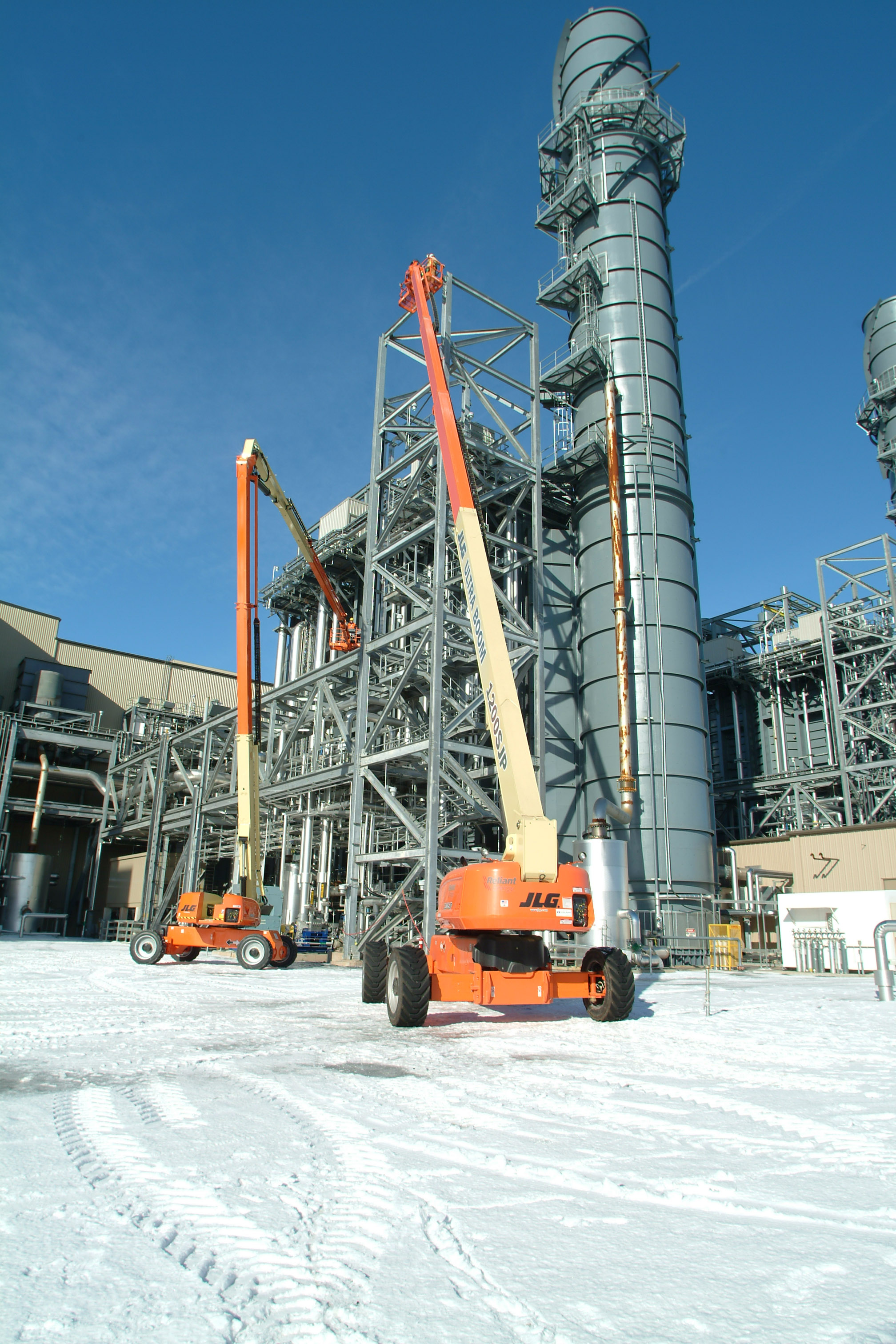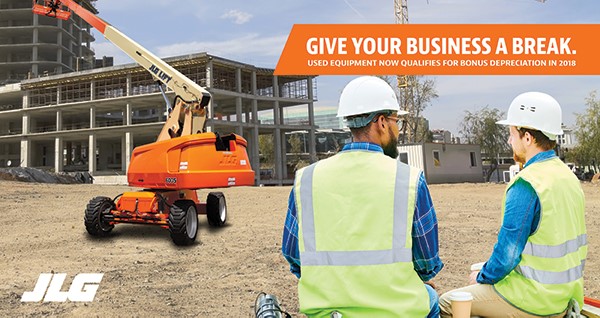With the Genie Z-60/37FE boom, equipped with a Fuel Electric Hybrid System, we give our customers the opportunity to choose either from a full electric machine or a diesel powered machine, environmental consciousness with lower cost of operation. 2 modes of operation: Full-electric: full-day, emission-free on a single charge, Diesel driven generator: one week of run time with a single tank of diesel.
12/30/18
Product Demo: Genie Z™-60/37FE Articulating Boom Lift: Hybrid System - ANSI
With the Genie Z-60/37FE boom, equipped with a Fuel Electric Hybrid System, we give our customers the opportunity to choose either from a full electric machine or a diesel powered machine, environmental consciousness with lower cost of operation. 2 modes of operation: Full-electric: full-day, emission-free on a single charge, Diesel driven generator: one week of run time with a single tank of diesel.
12/27/18
Don’t Let Winter Weather Freeze Your Productivity

Rise above winter weather with a few quick checkups and the right best practices. These tips can help you keep your JLG® machines operating smoothly throughout the season. Be sure to do the following:
- Ensure that battery and battery connections are secure and corrosion-free
- Check cannon plugs for moisture, and apply a small amount of dialectic grease to ward off moisture.
- Inspect toggle switches and joysticks at both platform and ground for boot damage: water or ice damage to one toggle can render your machine inoperative
- User the recommended lubricants, fuels, and ambient working temperatures listed in your service manuals
12/21/18
Time is running out to take advantage of year-end tax breaks!

Thanks to major changes to Section 179 and bonus depreciation in 2018, your business could potentially deduct the entire purchase price of new and USED equipment*.
But to qualify for these tax incentives, eligible equipment must be purchased or financed and put into service by December 31, 2018. So don’t wait too long. Find your closest JLG dealer or apply for JLG finance offers today.
Want to learn more before you decide if these incentives are right for your business? Head over to Direct Access, our access industry resource center, to read FAQs about Section 179 and bonus depreciation.
* The information in this email should not be construed as tax advice or as a promise of potential tax savings or reduced tax liability. Please contact your accountant or tax consultant/attorney to see how Section 179 and bonus depreciation would apply to your individual business.
12/18/18
What’s the Difference Between ANSI & OSHA?
ANSI (American National Standards Institute) and OSHA (Occupational Safety and Health Administration) both set standards that govern the access industry. Learn the difference between these organizations in this video.
12/15/18
12/12/18
X1000AJ Compact Crawler Boom

Key Features
- Enhanced Reach – Class-leading 56-ft up and over work envelope and 54-ft horizontal outreach
- Improved Stability – One-touch, self-leveling, multi-position outriggers
- More Power Options – 76V advanced technology 2.0 lithium-ion battery for quiet indoor operation or Kubota D902 diesel engine power for outdoor jobs
12/09/18
How Wearables Will Improve Construction Safety
We live in an age of
data. Every website we visit, item we purchase and address we program
into our GPS is recorded, usually with the goal of improving our
experience. But, what if we could leverage the power of data to keep
workers safer on the job? That’s where wearables come in.
Benefits
The main benefit of
wearable sensors in construction is that they can help reduce a worker’s
risk of injury or stress. They do this by monitoring vital signs like
heart rate, skin temperature, oxygen levels and even electrical activity
on the skin. It then alerts the worker if a potentially dangerous level
was recorded. Some wearables may even sense the environment around the
worker and sound a safety alarm if a situation becomes dangerous.
Because wearables are
small—a wristband or chest band, for example—they are less intrusive.
They allow managers to evaluate workers’ health and safety in real time
without relying on people to manually report their status. This
proactive monitoring can help to prevent dangerous situations and allow
work to be performed with less risk.
Another possible benefit
is reduced insurance rates. While this is a new technology, some
insurance companies may offer discounts to organizations that adopt
wearables as a tool to keep workers safer.
Potential Challenges
Wearable sensors collect
data about a person’s physical and mental state. Therefore, privacy can
become a concern. Before implementing wearable technology, companies
must put a policy in place to determine what data will be available to
management and what will be kept private.
Workers—particularly
people who have been in the construction industry for years—may be less
receptive to adding this new technology to their work day. It’s
important to get buy-in from people at all levels of your organization
and to show them how adopting wearable sensing technology will improve
construction safety and health.
Read Safety Tip
12/06/18
Advanced Life Cycle Solutions
Watch this video recap to follow the story of how JLG delivers lower total cost of ownership at every level, from customer-focused R&D to single source parts.
http://www.jlg.com/
Subscribe to:
Posts (Atom)



